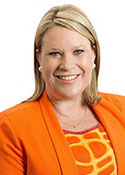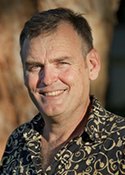Solomon
Margin: Country Liberal 1.4%
Region: Darwin/Palmerston, Northern Territory
In a nutshell: Party loyalties are finely balanced in the seat that accommodates Darwin, but Labor has only once been able to make it over the line since its creation in 2001.
Candidates in ballot paper order

|
TODD WILLIAMS JOHN KEARNEY NATASHA GRIGGS ROBERT DAWES LANCE LAWRENCE MARK GARNER SILVIJA MAJETIC MARTY REINHOLD LUKE GOSLING BRIGID McCULLOUGH NEVIN CARTWRIGHT |
Consisting of Darwin and its satellite town of Palmerston, Solomon has been held by the Country Liberal Party on margins of no greater than 2.8% since its creation in 2001, when the Northern Territory was first divided into two electorates, except when Labor’s Damian Hale got over the line by a 0.2% margin in 2007. The electorate is divided between newer Labor-leaning suburbs in the north, including Nightcliff, Casuarina, Jingili and Sanderson, and the town centre and its surrounds south of the airport, an area marked by higher incomes and fewer families. Stronger still for the CLP is Palmerston, a satellite town established 20 kilometres south-east of Darwin in the 1980s that accounts for just over a quarter of the electorate’s voters, and has a less multicultural complexion than Darwin and a high proportion of mortgage-paying young families. The member since 2010 has been Natasha Griggs, who survived a 0.3% swing in 2013 against the trend of the national trend. It will again be contested for Labor by its candidate from 2013, Luke Gosling, an adviser to successive Northern Territory Senators in Trish Crossin and Nova Peris, and the founder of a charity that works in East Timor.
Solomon’s distinguishing demographic characteristics are a high proportion of indigenous persons (9.6% in the 2011 census compared to a national figure of 2.5%) and a high proportion of people aged in their twenties and thirties, and a correspondingly low number of people aged over 65. The presence of four military bases in the electorate also gives it the highest ranking in the country of persons employed in defence, at 8.0% of all employed persons compared with 0.7% nationally. Together with the other Northern Territory electorate of Lingiari, it is also distinguished by an unusually low enrolment of around 70,000, compared with a national average of 103,000, which reflect the fact that the territory’s population-related seat entitlement barely qualifies it for a second seat. The creation of the second seat in 2001 looked seat to be reversed at the 2004 election, when the population determination placeed it 295 residents short of the required number, but both parties agreed to amend the legislation to ensure the second seat was maintained.
The Northern Territory gained its first member of federal parliament in 1922, but the member did not get full voting rights until 1968. Perhaps not coincidentally, the Northern Territory electorate had recently fallen to Sam Calder of the Country Party after a long period in Labor hands. With Calder’s retirement in 1980, the seat transferred to the Country Liberal Party, which had been established as a local alliance of Liberals and Nationals to contest elections in the newly established Northern Territory parliament. Labor gained the seat with the election of the Hawke government in 1983, defeating CLP member Grant Tambling (who returned as a Senator four years later). It subsequently changed hands with great frequency: future Chief Minister Paul Everingham recovered the seat for the CLP in 1984, Warren Snowdon won it back for Labor in 1987, Nick Dondas held it for the CLP for one term from 1996, and Snowdon recovered it in 1998.
Going into the 2001 election, the new seat of Solomon had a notional CLP margin of 2.3% while Lingiari had a notional Labor margin of 3.7%. Warren Snowdon naturally opted for the safer option of Lingiari, and Solomon emerged as an extremely tight contest between Labor’s Laurene Hull and David Tollner of the CLP. Tollner suffered a 2.2% swing against the national trend, but was able to hang on by 88 votes. The Northern Territory recorded only a modest swing to Labor at the 2007 election, but it proved just sufficient to deliver them their first victory in Solomon, with former football coach Damien Hale prevailing by 196 votes. The defeated Tollner went on to a tumultuous career in the Northern Territory parliament that looks set to end at the looming election in August after his failure to win re-endorsement. Hale meanwhile enjoyed a short tenure as member, being ousted at the 2010 election by a 1.9% swing to Natasha Griggs.
Analysis by William Bowe. Read William’s blog, The Poll Bludger.


